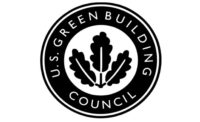The U.S. Green Building Council (USGBC) has announced the quarterly addenda to the Leadership in Energy and Environmental Design (LEED) green building rating system, which includes a new pilot Alternative Compliance Path (ACP) credit that is designed to further advance environmentally responsible forest management and help rid our buildings of illegal wood by promoting the use of wood that is verified to be legal.
The pilot ACP builds on the robust infrastructure that has been built around responsible wood sourcing and chain of custody to test an approach to prerequisite requirements, which could serve as a model for other building materials.
This new pilot ACP is applicable to both LEED 2009 and LEED v4 systems. While LEED has always rewarded leadership in materials specification, this new ACP seeks to leverage LEED’s power by focusing attention on the significant need for more comprehensive and effective legality verification of building products. The pilot ACP is designed to address a critical piece of the supply chain and reward project teams who proactively verify that the wood they are using is legal.
"Healthy, vibrant forests are an essential piece of life as we know it,” said Rick Fedrizzi, CEO and founding chair, USGBC. “LEED has made tremendous strides by promoting leadership on sourcing of forestry products. We want LEED to also be a significant driver for stopping illegal logging. As we have begun looking at approaches to incentivize responsible sourcing of all materials that go into our buildings, such as concrete, steel, copper and other materials, we recognize the need to address both the top, rewarding the best, as well as the bottom by eliminating unacceptable practices.”
Over the last 15 years, the green building industry has invested a significant amount of resources related to responsible procurement of forest products, which have taken up the vast majority of the debate about raw materials sourcing.
"This focus of the green building industry on the various wood certification standards has produced measureable progress,” added Fedrizzi. “With the pilot ACP, we are increasing the scope of LEED related to wood with an eye toward possibly applying what we learn to other industries. Beyond this credit, LEED v4 takes steps to reward progress related to all raw materials sourcing issues and encourage all sectors to continue to improve.”
Scot Horst, USGBC's CPO, said, "Today, it is possible to achieve the LEED wood credit and still have illegal wood in a LEED certified project. This is because LEED projects receive credit for a percentage of the wood on the project, rather than on all wood used. LEED is a global standard with a vision of market transformation. Addressing the illegal wood issue in LEED projects, especially in projects outside of the U.S., comes at a critical time both for the global issue of illegal logging and unfair forestry practices and also for LEED and its growing influence.”
The LEED green building certification system is the world’s most widely used program for the design, construction, maintenance and operations of green buildings. Today, there are nearly 75,000 commercial projects participating in LEED across the globe, with 1.85 million square feet of building space becoming LEED-certified every day.
Green construction is a large economic driver. According to the 2015 USGBC Green Building Economic Impact Study, green construction will account for more than 3.3 million U.S. jobs—more than one-third of the entire U.S. construction sector—and generate $190.3 billion in labor earnings. The industry’s direct contribution to the U.S. gross domestic product (GDP) is also expected to reach $303.5 billion from 2015–2018.
For more information , visit usgbc.org/LEED.








